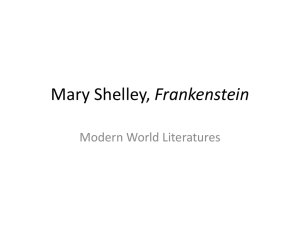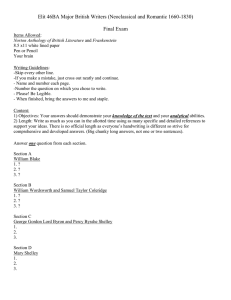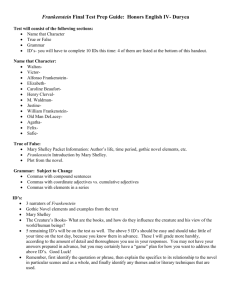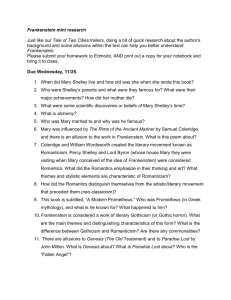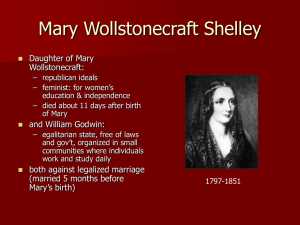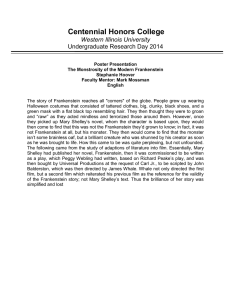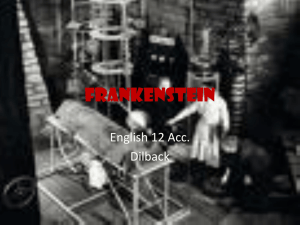reviewed for Science by Jordi
advertisement
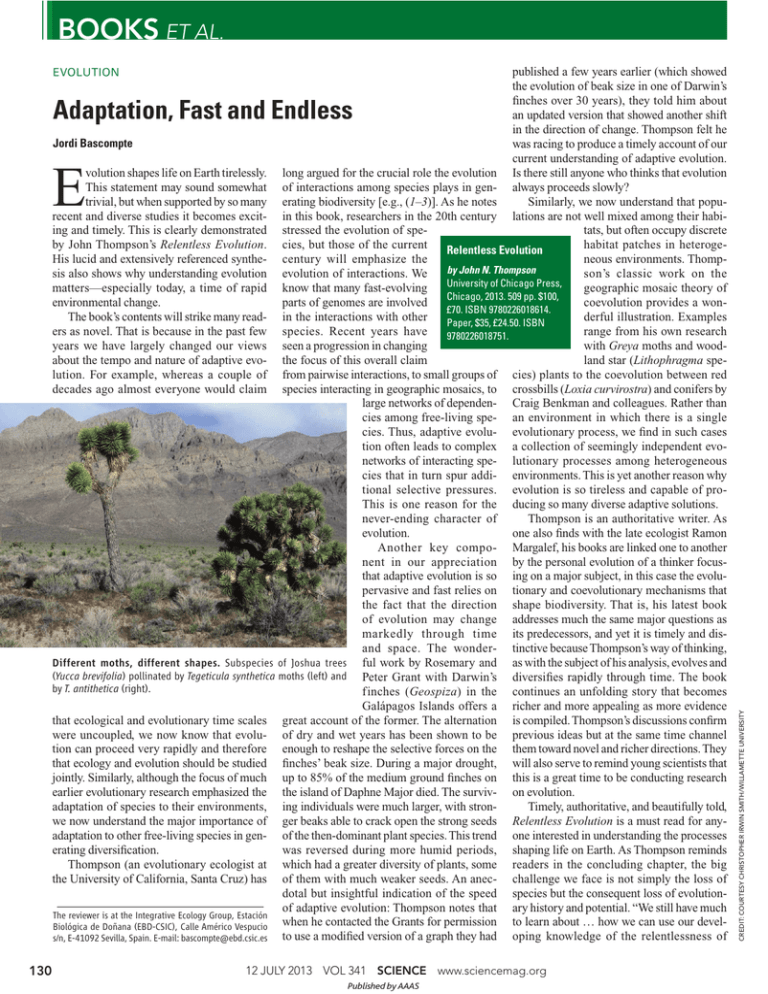
BOOKS ET AL. published a few years earlier (which showed the evolution of beak size in one of Darwin’s finches over 30 years), they told him about an updated version that showed another shift in the direction of change. Thompson felt he Jordi Bascompte was racing to produce a timely account of our current understanding of adaptive evolution. volution shapes life on Earth tirelessly. long argued for the crucial role the evolution Is there still anyone who thinks that evolution This statement may sound somewhat of interactions among species plays in gen- always proceeds slowly? trivial, but when supported by so many erating biodiversity [e.g., (1–3)]. As he notes Similarly, we now understand that popurecent and diverse studies it becomes excit- in this book, researchers in the 20th century lations are not well mixed among their habiing and timely. This is clearly demonstrated stressed the evolution of spetats, but often occupy discrete by John Thompson’s Relentless Evolution. cies, but those of the current habitat patches in heterogeRelentless Evolution His lucid and extensively referenced synthe- century will emphasize the neous environments. Thompby John N. Thompson sis also shows why understanding evolution evolution of interactions. We son’s classic work on the University of Chicago Press, matters—especially today, a time of rapid know that many fast-evolving geographic mosaic theory of Chicago, 2013. 509 pp. $100, environmental change. parts of genomes are involved coevolution provides a won£70. ISBN 9780226018614. The book’s contents will strike many read- in the interactions with other derful illustration. Examples Paper, $35, £24.50. ISBN ers as novel. That is because in the past few species. Recent years have range from his own research 9780226018751. years we have largely changed our views seen a progression in changing with Greya moths and woodabout the tempo and nature of adaptive evo- the focus of this overall claim land star (Lithophragma spelution. For example, whereas a couple of from pairwise interactions, to small groups of cies) plants to the coevolution between red decades ago almost everyone would claim species interacting in geographic mosaics, to crossbills (Loxia curvirostra) and conifers by large networks of dependen- Craig Benkman and colleagues. Rather than cies among free-living spe- an environment in which there is a single cies. Thus, adaptive evolu- evolutionary process, we find in such cases tion often leads to complex a collection of seemingly independent evonetworks of interacting spe- lutionary processes among heterogeneous cies that in turn spur addi- environments. This is yet another reason why tional selective pressures. evolution is so tireless and capable of proThis is one reason for the ducing so many diverse adaptive solutions. never-ending character of Thompson is an authoritative writer. As evolution. one also finds with the late ecologist Ramon Another key compo- Margalef, his books are linked one to another nent in our appreciation by the personal evolution of a thinker focusthat adaptive evolution is so ing on a major subject, in this case the evolupervasive and fast relies on tionary and coevolutionary mechanisms that the fact that the direction shape biodiversity. That is, his latest book of evolution may change addresses much the same major questions as markedly through time its predecessors, and yet it is timely and disand space. The wonder- tinctive because Thompson’s way of thinking, Different moths, different shapes. Subspecies of Joshua trees ful work by Rosemary and as with the subject of his analysis, evolves and (Yucca brevifolia) pollinated by Tegeticula synthetica moths (left) and Peter Grant with Darwin’s diversifies rapidly through time. The book by T. antithetica (right). finches (Geospiza) in the continues an unfolding story that becomes Galápagos Islands offers a richer and more appealing as more evidence that ecological and evolutionary time scales great account of the former. The alternation is compiled. Thompson’s discussions confirm were uncoupled, we now know that evolu- of dry and wet years has been shown to be previous ideas but at the same time channel tion can proceed very rapidly and therefore enough to reshape the selective forces on the them toward novel and richer directions. They that ecology and evolution should be studied finches’ beak size. During a major drought, will also serve to remind young scientists that jointly. Similarly, although the focus of much up to 85% of the medium ground finches on this is a great time to be conducting research earlier evolutionary research emphasized the the island of Daphne Major died. The surviv- on evolution. adaptation of species to their environments, ing individuals were much larger, with stronTimely, authoritative, and beautifully told, we now understand the major importance of ger beaks able to crack open the strong seeds Relentless Evolution is a must read for anyadaptation to other free-living species in gen- of the then-dominant plant species. This trend one interested in understanding the processes erating diversification. was reversed during more humid periods, shaping life on Earth. As Thompson reminds Thompson (an evolutionary ecologist at which had a greater diversity of plants, some readers in the concluding chapter, the big the University of California, Santa Cruz) has of them with much weaker seeds. An anec- challenge we face is not simply the loss of dotal but insightful indication of the speed species but the consequent loss of evolutionof adaptive evolution: Thompson notes that ary history and potential. “We still have much The reviewer is at the Integrative Ecology Group, Estación when he contacted the Grants for permission to learn about … how we can use our develBiológica de Doñana (EBD-CSIC), Calle Américo Vespucio to use a modified version of a graph they had oping knowledge of the relentlessness of s/n, E-41092 Sevilla, Spain. E-mail: bascompte@ebd.csic.es EVOLUTION Adaptation, Fast and Endless 130 12 JULY 2013 VOL 341 SCIENCE www.sciencemag.org Published by AAAS CREDIT: COURTESY CHRISTOPHER IRWIN SMITH/WILLAMETTE UNIVERSITY E BOOKS ET AL. evolution to maintain the diverse web of life and our place within that web.” References 1. J. N. Thompson, Interaction and Coevolution (Wiley, New York, 1982). 2. J. N. Thompson, The Coevolutionary Process (Univ. Chicago Press, Chicago, 1994). 3. J. N. Thompson, The Geographic Mosaic of Coevolution (Univ. Chicago Press, Chicago, 2005). 10.1126/science.1239702 SCIENCE AND CULTURE Origins of the Modern Prometheus Michael A. Goldman CREDIT: FROM M. SHELLEY, FRANKENSTEIN (COLBURN AND BENTLEY, LONDON, 1831) A s scientists, we have a turbulent relationship with science fiction, not to mention the broader poetry and literature and those who practice in these dark arts. This is especially so when writers warn us of the arrogance and the hazards of our own work. But from the mid-18th century into the first decades of the 19th, England’s high society, literary society, and scientific innovators shared the parlor. In The Lady and Her Monsters, Roseanne Montillo transports the reader into that dark and stormy, intensely curious, romantic, and macabre slice of history. Her sweeping biography of Mary Wollstonecraft Shelley portrays a time that saw the poetry of Keats and Byron; the dawn of a new, experimental physiology and medicine; and the horror of Frankenstein; or, The Modern Prometheus (1). The daughter of William Godwin and Mary Wollstonecraft, Mary Shelley would be surrounded by death, intrigue, and storm from the start. The night of her birth, London experienced a storm “later remembered as one of the most awesome displays of thunder and lightning anyone had ever seen.” While natural philosophers were learning to master electricity, others saw their efforts as sacrilegious and the angry thunderstorms a sign of God’s wrath. The worst was still to come: Wollstonecraft, a writer and philosopher whose A Vindication of the Rights of Woman is often credited as the first feminist tome, died 11 days later from an infection acquired during childbirth. Now there’s a memorable entry into the world. After the family moved for a new start, their home was near the city’s prisons and the The reviewer is at the Department of Biology, San Francisco State University, San Francisco, CA 94132–1722, USA. E-mail: goldman@sfsu.edu The Creature. Theodor von Holst’s frontispiece to Mary Shelley’s 1831 edition. about the rich histories of the Frankenstein castle and the family for which it was named. Montillo presents Radu Florescu’s controversial claims (2) of a link between Mary’s novel and the alchemist Johann Konrad Dippel (1673–1734). Dippel, born at Burg Frankenstein, became the stuff of local legends: He was believed to have found the philosopher’s stone (able to prolong life and turn lead into gold). But his use of the stone for his own gain, and his lack of knowledge of chemistry, resulted in his burning down the place. Parallels with the characters, events, and scenes in the novel are palpable. Montillo’s account is certainly not a spoiler for the novel or the many plays and movies that followed. She reminds us that frequent hangings that brought Londoners the blockbuster 1931 film from Univerinto a frenzy. More positively, Godwin hosted sal Studios is a work of pure entertainment gatherings of many thinkers of the day, such that “turned Mary Shelley’s moral tale into a as Samuel Taylor Coleridge, basic horror story,” ignoring who read his The Rime of its most important messages. The Lady and Her Monsters the Ancient Mariner at one. Science fiction is valued A Tale of Dissections, Montillo (who teaches litnot just for its entertainment Real-Life Dr. Frankensteins, erature at Emerson College) value or the cautionary mesand the Creation of Mary notes, “A decade later Mary sage it sends, but because Shelley’s Masterpiece Godwin would use simithe popular literature—espeby Roseanne Montillo lar imagery in the opening cially when it erupts into William Morrow (HarperCollins), scenes of … Frankenstein. … theaters and broader discusNew York, 2013. 332 pp. $26.99, In it, the fictional character of sion—provides an excuse £17.30. ISBN 9780062025814. Robert Walton, a mariner and for scientists to teach, and explorer intent on finding a the general public to learn, passage to the North Pole, appears and echoes about the work scientists do. Frankenstein is Coleridge’s mariner as he too was traveling almost 200 years old, but its message today into uncharted waters.” (with few exceptions) remains the same. Conversation in the Godwin home cer- Mary Shelley’s book is a must read. Montainly included the concept of animal elec- tillo’s biography, though not quite the “scitricity, which had been around since at least ence of Frankenstein” I had hoped, provides the mid-1700s. The ideas of electricity’s role a rewarding addition of scientific and social in physiology, its curative properties, and the context. With a time sequence that is hard to potential for reanimation of dead tissue had, follow and two Marys whose lives are rife by Mary Godwin’s youth, “become fashion- with romantic intrigue, tragedy, death, and able in all of European society”—from the depression, The Lady and Her Monsters isn’t natural philosophers to “more amateurish an easy read. The story of Mary Shelley’s individuals” and also “among artists and writ- creation, life, and death mirrors the story ers and at crowd-pleasing soirées and salons of Frankenstein and is almost as entertainall over England, France, and Germany.” ing and enlightening as the monster’s tale. Poet Percy Shelley was among those who Addressing humanity’s coping with its newexperimented with this “vital force existing found powers, they are stories for every age. in humans and nature” and later wrote “long References and Notes poems and odes that mused on the sublime 1. [M. Shelley], Frankenstein; or, The Modern Prometheus mysteries of the natural world and the awe(Lackington, Hughes, Harding, Mavor, and Jones, London, 1818). some powers of lightning and thunder.” 2. R. Florescu, In Search of Frankenstein (New York Graphic Later, Mary Shelley’s travels with Percy Society, Boston, 1975). For a review of a later edition of would lead them to the town of Niederthis work, see (3). 3. www.erudit.org/revue/ron/1997/v/n7/005758ar.html. Beerbach, where they would see Burg Frankenstein. Percy and Mary collected local folk tales, and it is possible that they heard much 10.1126/science.1240948 www.sciencemag.org SCIENCE VOL 341 12 JULY 2013 Published by AAAS 131
